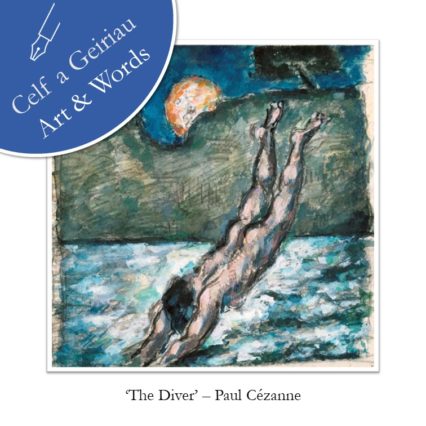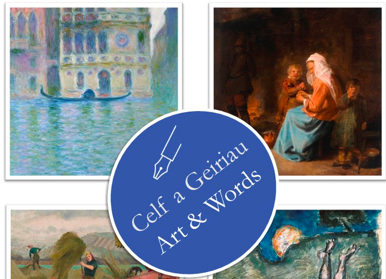Rachel Carney details her latest project, Arts & Words, undertaken with National Museum Wales, seeking to add nuance and community into the interpretation of traditional works of art via poetic expression.
Art galleries are often seen as places of silent contemplation. A space where visitors can spend time in front of each piece of art, become absorbed in it, and occasionally read the accompanying caption. I have enjoyed visiting such galleries, but this traditional style of interpretation – with small labels that provide some context, along with the date, the name of the artist, and details of whichever wealthy individual donated it to the museum – seems aimed at a very specific kind of audience. What about diversity? What about telling the story, or stories, of different pieces of art from more than one perspective? Or simply acknowledging that there might be varying interpretations? What about asking the visitors what they think, by beginning an open-ended conversation? These questions, in many ways, encapsulate the liminal space that art is meant to occupy in the first place.
Over the last year and a half, many museums have had to radically re-think what they do. I’ve been working on a project with National Museum Cardiff to investigate what happens when the frame is metaphorically removed from a painting, allowing it to become something that is open, and unfinished, something that could be added to, or interacted with. We’re starting a conversation, and inviting as many people as possible to join in.
 I’ve been running online creative writing workshops with a group of people from Rhondda Cynon Taff, asking them to write poems in response to works of art from the National Museum Wales collection. Some of these poems will be posted on the museum’s Instagram account over the next few weeks, with an invitation for others to have a go at writing a poem of their own and sharing it, if they wish to, adding their voice to the conversation. Every creative response will be different, and each one will give us a new perspective on the work of art.
I’ve been running online creative writing workshops with a group of people from Rhondda Cynon Taff, asking them to write poems in response to works of art from the National Museum Wales collection. Some of these poems will be posted on the museum’s Instagram account over the next few weeks, with an invitation for others to have a go at writing a poem of their own and sharing it, if they wish to, adding their voice to the conversation. Every creative response will be different, and each one will give us a new perspective on the work of art.
This is not about writing exceptional, exquisitely crafted poetry. It is about giving everyone the opportunity to respond creatively to what they see, opening up the curatorial space for anyone to have their say, in a way that is free of constraints and expectations. That’s one of the benefits of beginning with poetry. It is a genre that embraces absurdity, a genre where you can break the normal rules of grammar and punctuation for the sake of expressing something freely and truly. With poetry, you can slow down and let a different part of your mind take over – the part of your brain that operates on an unconcious level – translating impressions into words. You don’t need to be a poet, and you don’t have to call what you write ‘poetry’. It can take any form. For each post there will be a few prompts to get you started. The aim of this project is to encourage as many people as possible to take part, responding with their own creative thoughts and impressions. Each response will give us a new interpretation of the artwork, a new way of seeing and understanding.
My research investigates whether this opening up of art interpretation might enable museums to create a more inclusive, more diverse space, where every creative response is seen as a valuable contribution towards a larger, collective act of interpretation, that may ultimately be applied differently through online spaces or in the galleries themselves.
Celf a Geriau / Art & Words
To take part in ‘Celf a Geriau / Art & Words’ visit the National Museum Wales Instagram account. Further details on this project are available here.
You May Also Like… Shani Rhys James in Conversation
Shani Rhys James is one of the most admired artists of her generation, with a career that has marked her out as a striking single-minded individualist. Lockdown and family tragedy has inspired her latest exhibition at Connaught Brown in Mayfair. Gary Raymond caught up with her from her home in mid-Wales via zoom.












